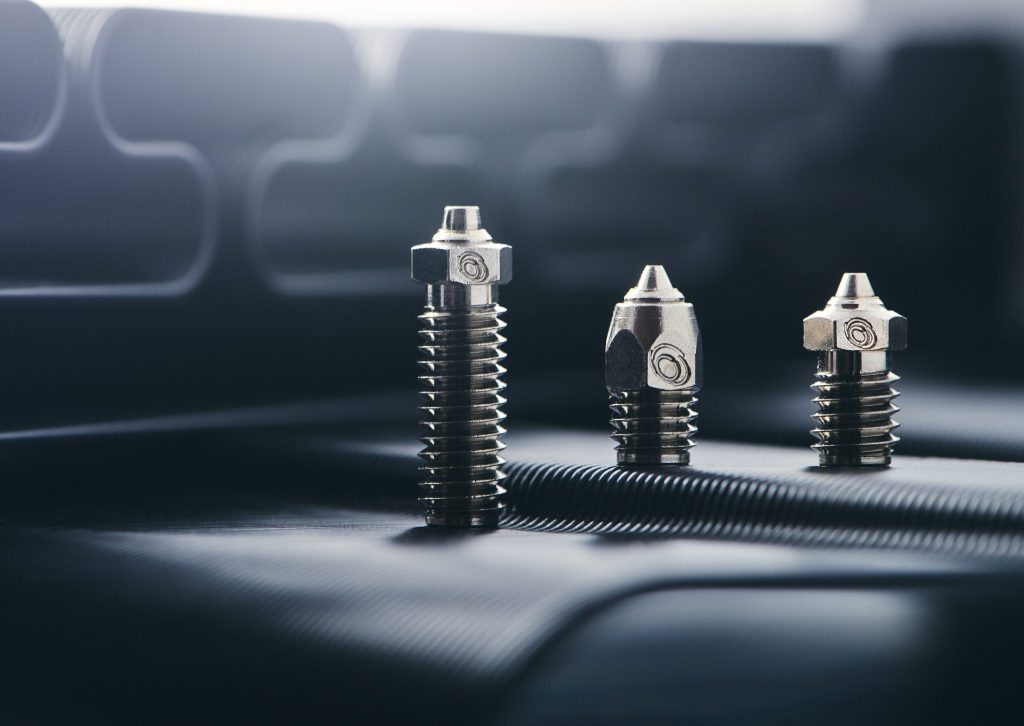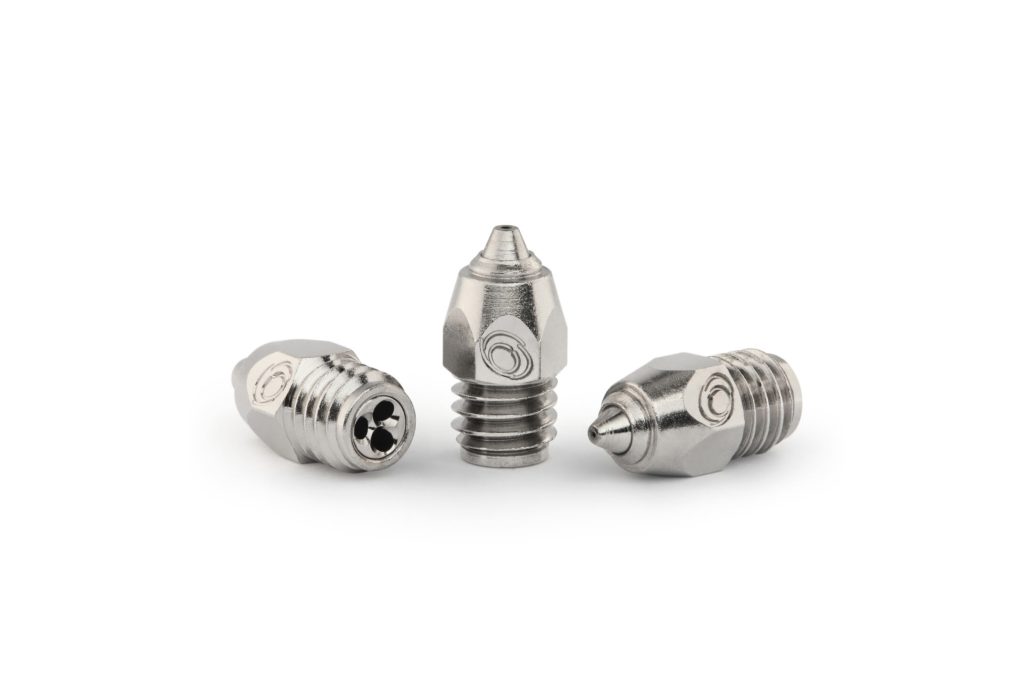Core Heating Technology (CHT) from Bondtech, the Swedish manufacturer of world-leading filament feeders, increases 3D printing speeds by over 30%. CHT accelerates 3D printing by increasing the rate at which filament melts in the nozzle, resulting in higher material flow.
However, this technology is not limited to cutting 3D printing times. CHT improves layer adhesion, resulting in stronger parts that possess improved mechanical properties. The nozzles also reduce energy consumption, allowing for a more sustainable additive manufacturing process.
In a recent interview with 3D Printing Industry Martin Bondéus, CEO and Founder of Bondtech, called CHT nozzles “the best value for money upgrades that will impact your 3D printing.”
Core Heating Technology has been patented in both the US and Europe and features in Bondtech’s line of Nickel Coated Brass and BiMetal 3D printing nozzles.
What is Core Heating Technology?
Central to CHT is its unique material inlet geometry, which splits the filament into three separate channels. This increases the material’s surface contact with the nozzle’s heating element, melting it from within.
As a result, the melting capacity of the hotend is significantly improved, resulting in faster melting of the filament and higher volumetric flow. This directly translates to faster 3D printing speeds, as more filament can be melted and extruded in less time.
According to Bondtech’s recently published white paper, the company’s patented CHT inlet has the biggest impact on achieving this boost in speed. The geometry alone increases the material’s volumetric flow rates by over 30%. The impact from increasing nozzle temperature was 7% per each additional 20°C and just 6% for each 0.4 mm increase in nozzle diameter.
The benefits of faster material melting and increased flow rates are not limited to speed. CHT nozzles also enable improved layer adhesion, which significantly improves the strength of 3D printed parts.
Bondtech’s three-channel inlet geometry heats filament more homogeneously than conventional nozzles. This increases the temperature of the material as it is extruded, allowing it to adhere more strongly to the previous layer.
As a result, CHT nozzles produce stronger parts that possess optimal mechanical properties. This is a key advantage for industrial-scale manufacturers producing functional, end-use parts.

CHT nozzles boost energy efficiency
Bondtech’s Core Heating Technology not only enhances 3D printing performance. It also significantly reduces energy consumption. This is because CHT heats filament more efficiently than other nozzles on the market.
Given that CHT can complete 3D print jobs in less time than with conventional nozzles, the high temperature of the 3D print bed and nozzle do not need to be sustained for as long. This directly reduces the amount of energy that is required during the 3D printing process.
Similarly, faster melting of the filament means that the energy applied to heating the nozzle is used more efficiently. Thanks to their high melting rates, CHT nozzles can more easily maintain an optimal temperature, conserving energy in the process.
Ultimately, Bondtech’s technology allows customers to complete more 3D print jobs in less time and with less energy, making CHT a more sustainable option for 3D printing.

How CHT nozzles 3D print faster
Bondtech’s Core Heating Technology is patented in both the US (US11712847B2) and Europe (EP3445568A1). Published in 2023 and 2019, respectively, the patents outline the key design features that make Bondtech’s nozzles so unique. The key to this design is increasing the contact area between the metal of the nozzle and the plastic filament, causing it to melt faster.
The patent claims outline that the CHT design includes a nozzle which is attached to a heating block. A hole passes through the center of these two components, through which filament can be fed.
This hole features heat-conductive materials and supports using, for instance, a metal bar placed diagonally through its center. These materials ensure heat is efficiently transferred from the heating block to the 3D printing filament. In turn, this reduces energy usage, resulting in more sustainable 3D printing.
Significantly, the CHT patent outlines that multiple holes, or channels, can be located around a central hub within the nozzle. The filament can then be split between these channels, heating the material from within, and optimizing the melting process.
The patent is not limited to the three-channel design currently used in Bondtech nozzles, meaning it could add more channels to its CHT nozzle design. However, the company has found that three holes offer the perfect balance between reliability and performance.

Core Heating Technology: the future of extrusion?
The benefits offered by Bondtech’s CHT technology for a range of 3D printing applications are clear. The company’s nozzles not only increase 3D printing speeds, they also enable more sustainable and environmentally friendly manufacturing by reducing energy consumption.
Core Heating Technology also allows users to produce parts that are stronger and possess improved 3D print quality. This is particularly beneficial for those producing functional, end-use parts that require optimal mechanical properties.
Given these notable advantages, will additive manufacturing witness widespread adoption of CHT technology to drive productivity, energy efficiency, and sustainability? Bondéus certainly thinks so, previously telling 3D printing Industry that “in the future, all nozzles will be CHT.”
Want to help select the winners of the 2024 3D Printing Industry Awards? Join the Expert Committee today.
What does the future of 3D printing hold?
What near-term 3D printing trends have been highlighted by industry experts?
Subscribe to the 3D Printing Industry newsletter to keep up to date with the latest 3D printing news.
You can also follow us on Twitter, like our Facebook page, and subscribe to the 3D Printing Industry Youtube channel to access more exclusive content.
Featured image shows Bondtech’s CHT nozzles. Image via Bondtech.


